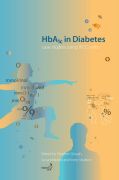
The units used for reporting HbA1c in diabetes are changing from 2009. While HbA1c was formerly expressed as a percentage, the International Federation of Clinical Chemistry and Laboratory Medicine has developed a new reference system, endorsed by the major international diabetes associations, using completelydifferent units - mmol/mol. By 2011, this will universally be accepted. This will have a massive impact on all those both in research laboratories and in primary care who are both developing diabetes treatment and dealing first hand with, and advising, their patients. This pocketbook will act two-fold: it willboth explain the new measurement levels and describes some of the limitationsof the current system of measuring HbA1c, and also, through the use of case histories from a range of experts, illustrate exactly how the new levels will be applied for a wide-range of clinical scenarios regularly encountered. In each case history, both the old percentage units and the new mmol/mol units are expressed, thus helping the users transition to routine use of the new system of units significantly easier. The book will be fully endorsed and supported byDiabetes UK, which gains instant credibility in Europe and also commands respect in the US because of its leading position in diabetes advocacy. Diabetes UK will work with Wiley-Blackwell to help promote it as as a medical educational tool essential for those in primary care who treat diabetic patients.Stephen Gough is Professor of Medicine and Hon. Consultant Physician, University of Birmingham and University of Birmingham NHS Foundation Trust. He has had 85 articles published on PubMed. Susan Manley is a clinical biochemist at the Department of Clinical Biochemistry, University Hospital Birmingham NHSTrust, Birmingham, UK. She has had 27 articles published on PubMed
- ISBN: 978-1-4443-3444-9
- Editorial: Wiley-Blackwell
- Encuadernacion: Rústica
- Páginas: 88
- Fecha Publicación: 26/03/2010
- Nº Volúmenes: 1
- Idioma: Inglés
